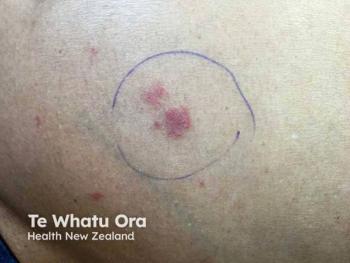
Patterns of Atopic Eczema
A study in JAMA Dermatology dove into the subject of atopic eczema, investigating the patterns of activity that may continue into adulthood.
Atopic eczema is characterized by a heterogenous waxing and waning course, with various ages of onset and persistence of symptoms. To help identify subtypes of atopic eczema by patterns of disease activity through mid-adulthood, a trial was created in the Journal of the American Medical Association Dermatology. Other goals included examining early risk factors and patients’ characteristics associated with subtype and how these subtypes may be related with other atopic skin issues and general health.1
The study investigated patients from 2 population birth cohorts, the 1958 National Childhood Development Study (NCDS) and the 1970 British Cohort Study (BCS70). Data from both were collected between 1958 and 2016, with analysis taking place between 2018 to 2020.
The subtypes of the atopic eczema were based on self-reported atopic eczema flare-ups at multiple time points. The subtypes were the outcome in models of early life characteristics and an exposure variable in models of midlife health, the article explained.
In total, there were 4 subtypes identified among the 15,939 patients from the NCDS (51.4% male, 75.4% White) and 14,966 individuals from the BCS70 (51.6% male, 78.8% White):
- Rare/no (88% to 91%);
- decreasing (4%);
- increasing (2% to 6%); and
- persistently high (2% to 3%) probability of reporting prevalent atopic eczema with age.
Factors that predicted differences included the sex at birth and early life factors, including social class, region of residence, tobacco smoke exposure, and breastfeeding, between the 3 atopic eczema subtypes and the infrequent/no atopic eczema group, but only the female sex differentiated the high and decreasing probability subtypes (odds ratio [OR], 1.99; 95% CI, 1.66-2.38).
Those in the high subtype were most likely to experience asthma and rhinitis, and those in the increasing subtype were at higher risk of poor self-reported general (OR, 1.29; 95% CI, 1.09-1.53) and mental (OR 1.45; 95% CI, 1.23-1.72) health in midlife.
“The findings of this cohort study suggest that extending the window of observation beyond childhood may reveal clear subtypes of atopic eczema based on patterns of disease activity,” the authors concluded. “A newly identified subtype with increasing probability of activity in adulthood warrants additional attention given observed associations with poor self-reported health in midlife.”
Reference:
Abuabara K, Ye M, Margolis DJ, et al. Patterns of atopic eczema disease activity from birth through midlife in 2 British birth cohorts. JAMA Dermatology. 2021;157(10):1191-1199. doi:10.1001/jamadermatol.2021.2489
Newsletter
Like what you’re reading? Subscribe to Dermatology Times for weekly updates on therapies, innovations, and real-world practice tips.


















